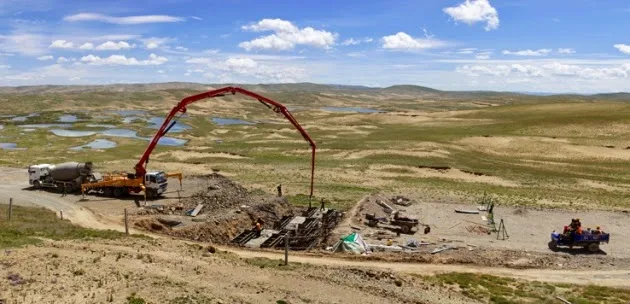China has set out to make a new law to regulate the traditional Tibetan practice of sky burial, which involves feeding bodies of the dead to birds. Official sources in Tibet have indicated that the use of sky burial sites as tourist attraction may be banned.
"It will be the first time for Tibet to regulate sky burials using legislation, which shows respect and offers protection to the millennium-old tradition," the official media quoted Samdrup, an official with the standing committee of the regional People's Congress.
The Regional People's Congress of Tibet, the local legislature, recently passed a bill to better regulate sky burials, covering issues like management of the site, environmental protection and qualification of ritual hosts. The purpose is to "better protect sky burials".
Chinese government has stopped the use of burial sites for tourism on several occasions in the past three decades, but the local officials have allowed it from time to time for developing tourism, sources said.
State media said that the traditional ritual has become controversial after tourists guides began leading tour groups to view the ceremony. There have been complaints that some travel agents have shown disrespect to the tradition. Tibetans and Mongolians cut bodies of the dead, and feed them to vultures and other predatory birds. It is regarded an act of generosity and a ritual that allows the soul to ascend to heaven.
The Tibetan government issued a provisional rule in 2005 that banned sightseeing, photographing and video recording at such burial sites, or publishing reports and pictures describing the rituals.
The law has been violated extensively as thousands of tourists crowd around the burial sites to watch the traditional practice. Even some monks are known to be involved in guiding tourists to the burial sites for collecting donations for their shrines.
http://timesofindia.indiatimes.com/world/china/China-to-ban-use-of-Tibetan-sky-burial-for-tourism/articleshow/46004209.cms
24/1/15---
Related:

"It will be the first time for Tibet to regulate sky burials using legislation, which shows respect and offers protection to the millennium-old tradition," the official media quoted Samdrup, an official with the standing committee of the regional People's Congress.
The Regional People's Congress of Tibet, the local legislature, recently passed a bill to better regulate sky burials, covering issues like management of the site, environmental protection and qualification of ritual hosts. The purpose is to "better protect sky burials".
Chinese government has stopped the use of burial sites for tourism on several occasions in the past three decades, but the local officials have allowed it from time to time for developing tourism, sources said.
State media said that the traditional ritual has become controversial after tourists guides began leading tour groups to view the ceremony. There have been complaints that some travel agents have shown disrespect to the tradition. Tibetans and Mongolians cut bodies of the dead, and feed them to vultures and other predatory birds. It is regarded an act of generosity and a ritual that allows the soul to ascend to heaven.
The Tibetan government issued a provisional rule in 2005 that banned sightseeing, photographing and video recording at such burial sites, or publishing reports and pictures describing the rituals.
The law has been violated extensively as thousands of tourists crowd around the burial sites to watch the traditional practice. Even some monks are known to be involved in guiding tourists to the burial sites for collecting donations for their shrines.
http://timesofindia.indiatimes.com/world/china/China-to-ban-use-of-Tibetan-sky-burial-for-tourism/articleshow/46004209.cms
24/1/15---
Related:












 GR
GR FR
FR DE
DE ES
ES IT
IT RU
RU EU
EU